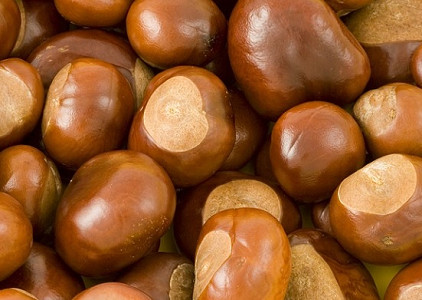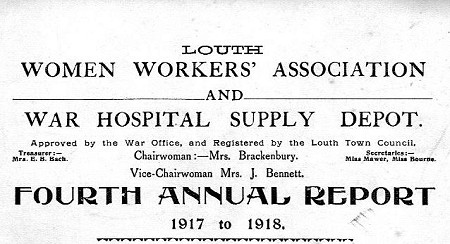Conkers to cordite in World War I

Conkers, or horse chestnuts

1918 report
Our museum collection is interesting and eclectic thanks to donations by members of the public. Now that we have a substantial internet presence, people in all parts of the world can find out about Louth Museum and contact us. An example of this is Mrs R Iversen, who lives in Australia. She is a descendant of the Richardson family of Louth (coachbuilders and hotel managers) and she kindly offered us a bundle of items relating to Louth.
One of these was the 1918 annual report of the Louth Women Workers’ Association and War Hospital Supply Depot, which gives us a glimpse of the effort put in by women in Louth during the Great War. The report tells us that a total of 75,255 articles were dispatched by these Louth women in the period 1914-18. The main items were socks, mufflers, helmets, gloves, face cloths and slippers.
The report gives lots of details - one that caught my eye was a comment on horse chestnuts or conkers: “In the Autumn of last year a Depot was opened for the collection of Horse Chestnuts, in co-operation with the Schools in Louth and District (Miss Margaret Sharpley, Secretary), and the result was 6 tons, which were forwarded through the direction of the Minister of Propellant Supplies.”
Why did the children of Louth collect six tons of conkers?
According to Historic England, in the autumn of 1917, schoolchildren and Scouts were asked to collect horse chestnuts. For their efforts, they earned 7s 6d [37.5p] for every hundredweight [50 kg]. The conkers were taken to the Royal Naval Cordite Factory at Holton Heath in Dorset, where they were fermented, and acetone was produced. This was a vital component of the gaseous propellant for shells and bullets known as cordite. From the late 19th century, cordite replaced black gunpowder as the main propellant for firearms and artillery, and during World War I huge quantities were needed.